

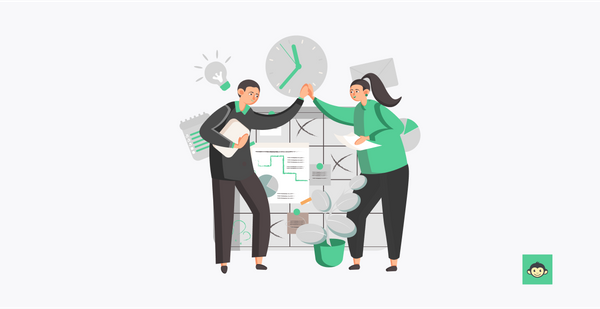
In today's fast-paced and ever-evolving workplace landscape, one element remains steadfast in its significance: employee engagement. It's the secret sauce that fuels productivity, nurtures talent, and propels organizations toward success.
But here's the catch: engagement doesn't thrive on autopilot; it requires a thoughtful strategy. This is where the Employee Engagement Action Plan (EEAP) steps into the limelight. Imagine it as your organization's playbook, your roadmap to a motivated and committed workforce.
In this exploration of EEAP, we'll dive deep into its definition, explore real-world examples, and uncover the best practices that can transform your workplace into an engagement powerhouse.
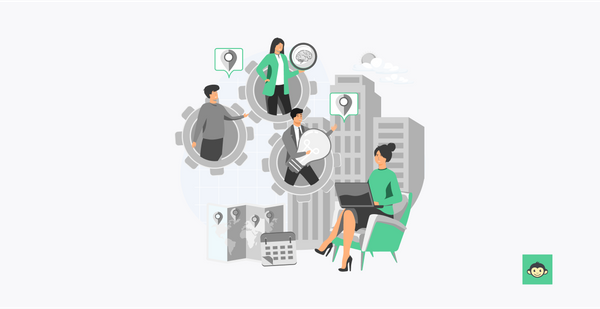
An employee engagement action plan is a structured strategy designed to improve and enhance employee engagement within an organization. It outlines specific initiatives, goals, and steps that the company intends to take to create a more engaged workforce.
This plan typically includes activities such as regular employee surveys to assess engagement levels, identifying areas of improvement, setting clear objectives for enhancing engagement, implementing targeted initiatives (e.g., training programs, recognition schemes, and communication strategies), assigning responsibilities to individuals or teams, and establishing measurable metrics to track progress.
The action plan serves as a roadmap to guide the organization in its efforts to create a workplace environment where employees are motivated, committed, and aligned with the company's mission and values. It is a dynamic tool that evolves with changing workforce needs and organizational goals, with the ultimate aim of fostering a more engaged and productive workforce.
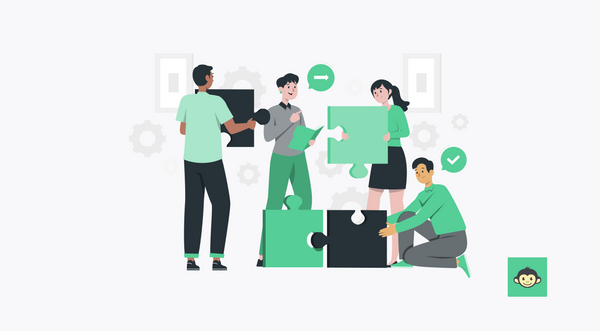
Creating an employee engagement action plan offers numerous benefits that contribute to a more motivated, committed, and productive workforce. Here are ten key advantages:
An employee engagement action plan is a valuable tool that not only addresses current engagement challenges but also sets the stage for long-term success.
It aligns the organization's efforts, enhances communication, and creates a positive work environment where employees feel valued and motivated to contribute their best, ultimately leading to improved business outcomes.
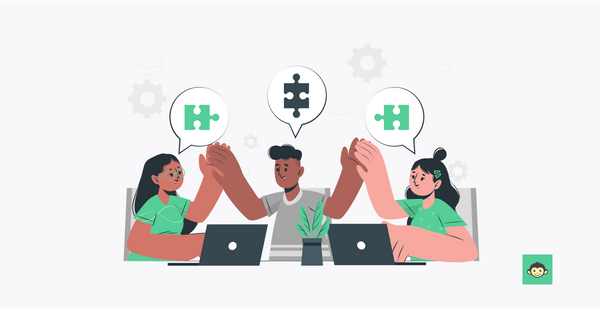
Employee engagement is an ongoing process, and the action plan should evolve to meet changing needs and challenges. Communication is crucial throughout the process, as involving employees in the development and implementation of the plan can lead to higher engagement levels and more effective solutions.
By following these six steps, you can create a robust action plan that fosters a more engaged and motivated workforce.
Begin by assessing the current state of employee engagement within your organization. Conduct surveys, interviews, and focus groups to gather feedback from employees. Analyze the data to identify areas that need improvement and understand the specific challenges.
Define clear and measurable objectives for your employee engagement action plan. These objectives should be closely aligned with the organization's goals and the feedback gathered from employees. For example, you might aim to increase overall employee engagement survey scores by a certain percentage within a specific timeframe.
Based on your assessment of key engagement drivers and objectives, identify specific initiatives and activities that will address the identified engagement issues. These initiatives can include training programs, communication enhancements, recognition schemes, wellness programs, or changes in work processes.
Determine who within the organization will be responsible for implementing each initiative. Assign clear roles and responsibilities to individuals or teams to ensure accountability. It's essential to have dedicated champions for each aspect of the plan.
Create a timeline that outlines when each initiative will be launched and completed. Allocate the necessary resources, including budget, technology, and personnel, to support the successful execution of the plan.
Establish key performance indicators (KPIs) and metrics to measure the success of your action plan. Regularly assess progress and make adjustments as needed. Continuously gather feedback from employees to gauge the impact of the initiatives and identify any new issues that may arise.
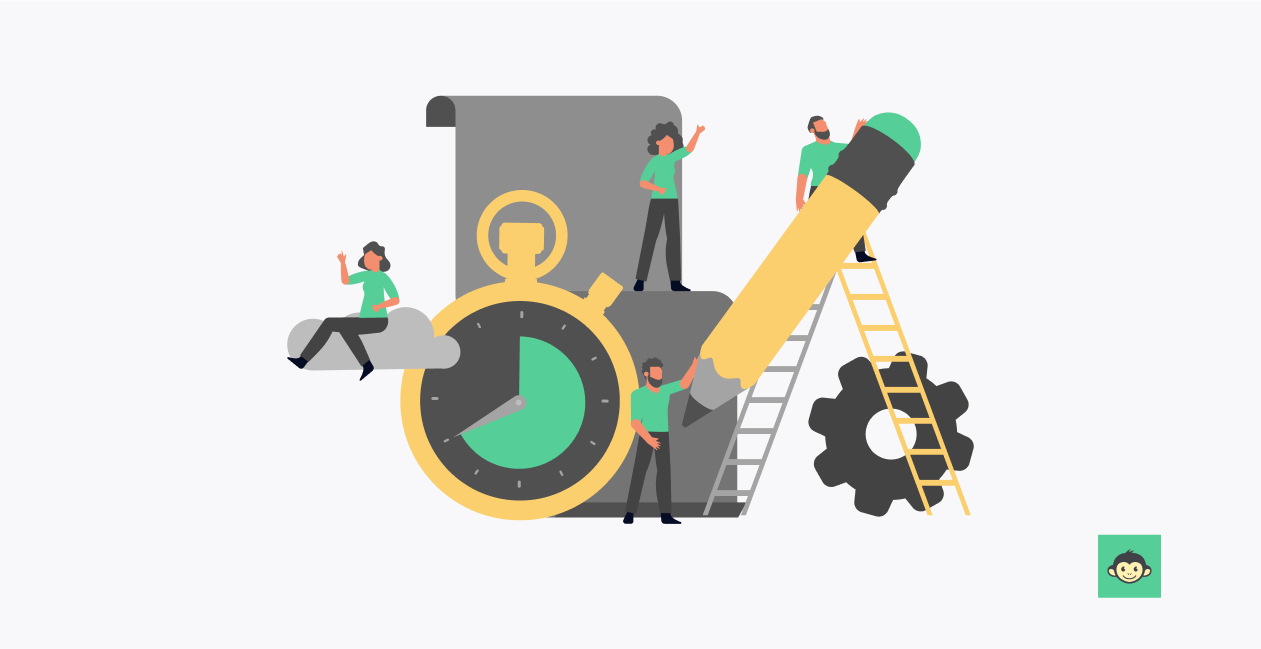
Here are 50+ creative and unique employee engagement action plan ideas to consider implementing in 2024:
These action plan ideas blend creativity, personalization, and innovation to engage employees in unique ways, fostering a vibrant and motivated workforce in 2024. Tailor these initiatives to align with your organization's culture and objectives for maximum impact.
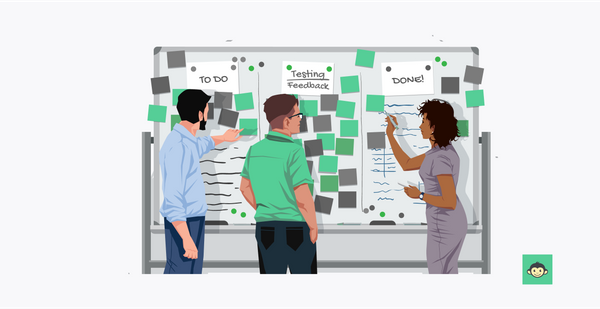
Here are five employee engagement action plan examples to provide you with a better understanding of how to structure your employee engagement plan:
Objective: Improve internal communication to boost employee engagement rates.
Initiatives: Implement regular town hall meetings, create a company-wide newsletter, and establish a digital communication platform.
Responsibilities: Internal Communications Team.
Timeline: Quarterly town hall meetings, monthly newsletters, and digital platform launch within six months.
Evaluation: Measure employee satisfaction with communication channels, assess employee feedback on the newsletter's content and relevance, and track engagement with the digital platform.
Objective: Increase employee recognition and appreciation.
Initiatives: Launch an employee recognition program, create a "Kudos" board for peer recognition, and introduce spot bonuses for outstanding performance.
Responsibilities: HR and Management.
Timeline: The recognition program launched within three months, the "Kudos" board established immediately, and spot bonuses introduced on an ongoing basis.
Evaluation: Monitor the frequency of recognition submissions, track the number of spot bonuses awarded, and survey employees about their satisfaction with the recognition initiatives.
Objective: Enhance career growth opportunities and skill development.
Initiatives: Provide access to online learning platforms, establish mentorship programs, and set up a skills assessment and development framework.
Responsibilities: Learning and Development Team.
Timeline: Online learning platform access granted immediately, mentorship programs launched within six months, skills assessment framework implemented within one year.
Evaluation: Measure employee participation in online courses, assess the success of mentorship pairings, and track skill development progress through the assessment framework.
Objective: Support employee well-being and work-life balance.
Initiatives: Offer wellness workshops, promote flexible work arrangements, and introduce "Wellness Days" where employees can take a day off for self-care.
Responsibilities: Wellness Committee and HR.
Timeline: Wellness workshops scheduled monthly, flexible work arrangements available immediately, and "Wellness Days" introduced within three months.
Evaluation: Survey employees on their participation in wellness activities, assess the utilization of flexible work arrangements, and gather feedback on the impact of "Wellness Days."
Objective: Create a culture of feedback and continuous improvement.
Initiatives: Launch regular employee engagement surveys, establish cross-functional improvement teams, and implement a feedback-driven recognition system.
Responsibilities: Employee Engagement Team and Managers.
Timeline: Employee engagement surveys conducted quarterly, cross-functional teams formed within two months, feedback-driven recognition system in place within six months.
Evaluation: Analyze survey results and track changes in engagement scores, monitor the progress of improvement teams, and measure the effectiveness of the feedback-driven recognition system through employee feedback and participation rates.
Objective: Foster a more inclusive workplace by promoting diversity and ensuring all employees feel valued.
Initiatives: Implement diversity training programs, establish employee resource groups, and conduct awareness campaigns celebrating cultural diversity.
Responsibilities: Diversity and Inclusion Committee.
Timeline: Diversity training initiated within three months, employee resource groups formed within six months, and cultural awareness campaigns ongoing throughout the year.
Evaluation: Assess employee feedback on the effectiveness of diversity training, monitor engagement within employee resource groups, and measure the impact of cultural awareness campaigns on workplace culture.
Objective: Strengthen social connections among employees to enhance team cohesion and collaboration.
Initiatives: Organize team-building events, facilitate virtual coffee breaks, and launch an internal social platform for casual interactions.
Responsibilities: Employee Engagement Team and HR.
Timeline: Team-building events scheduled quarterly, virtual coffee breaks initiated monthly, and internal social platform launched within three months.
Evaluation: Collect feedback on the effectiveness of team-building events, measure participation in virtual coffee breaks, and track engagement on the internal social platform.
Objective: Instill a sense of environmental responsibility and sustainability among employees.
Initiatives: Introduce eco-friendly workplace practices, organize sustainability awareness campaigns, and establish a green team for ongoing initiatives.
Responsibilities: Sustainability Committee.
Timeline: Eco-friendly practices implemented within three months, sustainability campaigns throughout the year, and the green team formed within six months.
Evaluation: Monitor the adoption of eco-friendly practices, assess employee engagement in sustainability campaigns, and measure the success of the green team's initiatives.
Objective: Provide clear career paths and support for professional advancement.
Initiatives: Conduct career development workshops, offer advancement mentorship programs, and create a transparent career progression framework.
Responsibilities: Human Resources and Leadership.
Timeline: Career development workshops scheduled quarterly, mentorship programs launched within six months, and a career progression framework implemented within one year.
Evaluation: Measure employee participation in career workshops, assess the effectiveness of mentorship pairings for career advancement, and gather feedback on the clarity of the career progression framework.
These action plan examples demonstrate how organizations can address specific aspects of employee engagement by setting clear objectives, defining initiatives, assigning responsibilities, establishing timelines, and implementing evaluation methods to measure success.
Tailor your action plan to employee engagement and align it with your organization's unique goals and challenges.

Creating your employee engagement action plan template involves several key steps to ensure it aligns with your organization's unique goals and needs. Here's a step-by-step guide:
By following these steps, you can create a comprehensive and tailored employee engagement action plan template that serves as a valuable tool for enhancing employee engagement within your organization.
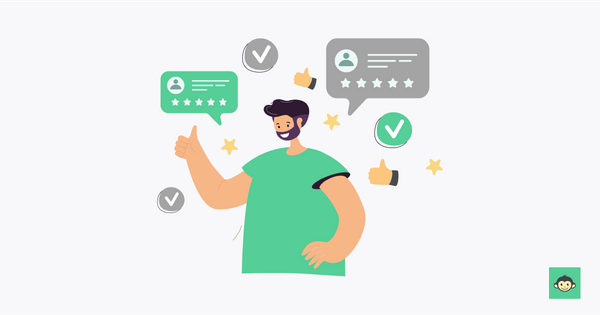
Engagement surveys serve as valuable tools for gauging employee satisfaction, identifying areas of improvement, and fostering a positive workplace culture. However, the true impact lies in the thoughtful and strategic action planning that follows.
Here are ten best practices for effective engagement survey action planning:
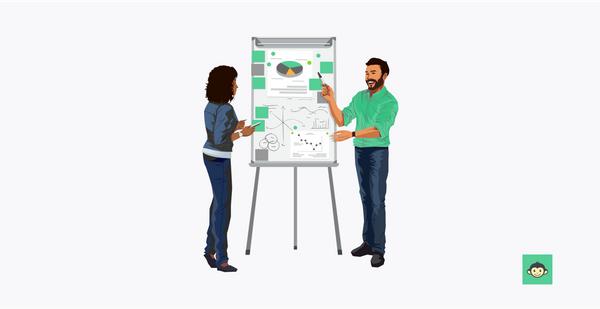
Proper communication of an employee engagement action plan is vital in the workplace as it serves as the conduit for alignment, understanding, and commitment. Effective communication ensures that employees are not only aware of the plan's objectives and initiatives but also comprehend how their roles and contributions fit into the larger engagement strategy.
Transparent and consistent communication fosters a sense of ownership and accountability among employees, motivating them to actively participate in engagement initiatives. Moreover, it provides a platform for feedback, allowing organizations to make real-time adjustments and address concerns promptly.
Ultimately, strong communication of the action plan cultivates a culture of trust, collaboration, and shared purpose, which are foundational elements for boosting overall employee engagement and driving organizational success.
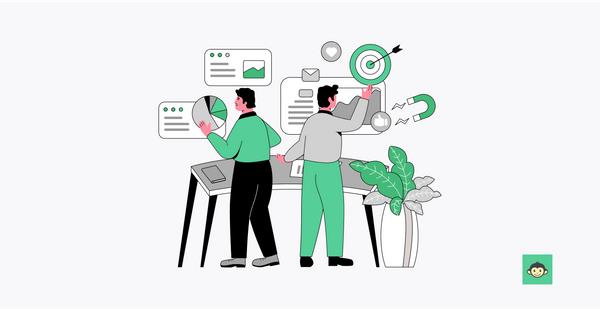
Implementing an employee engagement action plan can be a transformative process, but it also comes with its share of challenges. Here are five points to consider:
Just like classic fairy tales where heroes face resistance from dragons and monsters, organizations may encounter resistance to change when implementing their action plans.
Employees comfortable with existing practices may resist new initiatives, viewing them as disruptive dragons. Overcoming this challenge involves effective storytelling, where leaders communicate the benefits of change, much like heroes in tales explaining the greater good.
In a diverse workforce, communication can resemble navigating a multiverse with different languages and preferences. Meeting the challenge involves tailoring communication strategies to various employee segments.
Just as superheroes adapt to different dimensions, organizations need to adapt their messaging to resonate with employees of varying backgrounds and preferences.
Just as black holes devour everything in their path, bureaucratic structures can stifle innovation within organizations. Employees may hesitate to share creative ideas due to fear of rejection or the perception that their suggestions will be sucked into a bureaucratic black hole.
Addressing this challenge means creating a culture where innovation is encouraged and ideas are nurtured, much like exploring the cosmos for new possibilities.
Priorities in the workplace can sometimes feel like a time-traveling adventure, with urgent matters displacing long-term engagement efforts.
Organizations must balance immediate needs with long-term engagement strategies, ensuring that short-term crises don't overshadow the importance of sustained employee engagement initiatives.
Just as ghosts from the past can haunt us, unresolved issues and lack of closure from past employee engagement efforts can linger. Organizations should acknowledge and address past shortcomings transparently, ensuring that employees don't carry the ghosts of previous failures into new initiatives.
A fresh start, combined with learning from the past, can be the key to overcoming this challenge.
Much like navigating fantastical realms, organizations can successfully overcome these challenges with a combination of strategic thinking, open communication, and a commitment to continuous improvement.

Executing an employee engagement action plan effectively requires a strategic approach that incorporates unique and creative best practices. Here are five such practices:
Designate "Peer Engagement Ambassadors" from different teams or departments who act as champions of engagement. These ambassadors serve as go-to individuals for engagement-related questions, ideas, and activities. They organize team-building events, share best practices, and facilitate communication between employees and management.
Create engagement challenges that encourage healthy competition among employees. For instance, launch a "Wellness Challenge" where employees compete to achieve wellness goals. Offer incentives such as additional time off or personalized development opportunities for top performers. These challenges not only boost engagement but also promote a culture of well-being.
Organize cross-departmental "Innovation Hackathons" where employees from various functions collaborate to solve real business challenges. This not only fosters creativity and teamwork but also empowers employees to contribute directly to the organization's success.
Establish "Employee-Driven Innovation Labs" that allocate time and resources for employees to work on their innovative ideas. This practice encourages intrapreneurship, where employees can explore and develop innovative solutions to workplace challenges, ultimately contributing to business growth.
Create an internal platform where employees can share their personal and professional stories, experiences, and accomplishments. This storytelling platform humanizes the workplace, highlighting the diverse talents and backgrounds of employees. This can boost morale, inspire others, and strengthen the sense of belonging.
These best practices inject creativity and innovation into the execution of an employee engagement action plan, making it more dynamic, inclusive, and tailored to the evolving needs of the workforce. They empower employees to take an active role in engagement efforts, fostering a culture of ownership and collaboration.

Employee engagement action planning is a collaborative effort that involves various stakeholders within an organization, each contributing their expertise and perspectives. The primary responsibility for this crucial task often falls on the shoulders of several key players:
Top-level executives, including CEOs and other leaders, play a fundamental role in shaping the overarching vision and employee engagement strategy. Their responsibility extends to providing the necessary resources, support, and endorsement for the action plans devised.
Middle managers are crucial in implementing these plans within their respective teams, ensuring alignment with organizational goals.
HR professionals are at the forefront of employee engagement action planning. They spearhead the collection and analysis of engagement survey data, identify areas for improvement, and collaborate with other departments to formulate targeted initiatives.
HR's role includes communicating action plans to employees, tracking employee engagement progress, and providing ongoing support for the successful implementation of engagement strategies.
Dedicated employee engagement teams or committees are increasingly common in organizations. Comprising individuals from various departments, these teams work closely with HR to develop, execute, and monitor action plans.
Their responsibilities may include organizing engagement events, gathering employee feedback, and serving as a bridge between management and staff.
Engaging representatives from different departments ensures a holistic approach to action planning. Cross-functional teams contribute diverse perspectives, allowing for a more comprehensive understanding of the organization's dynamics.
These representatives actively participate in crafting initiatives that address the specific needs and challenges faced by different functional areas.
For action plans related to employee well-being, wellness committees, and specialized teams come into play.
Comprising professionals with expertise in health and wellness, these committees design initiatives such as wellness workshops, flexible work arrangements, and mental health support programs.
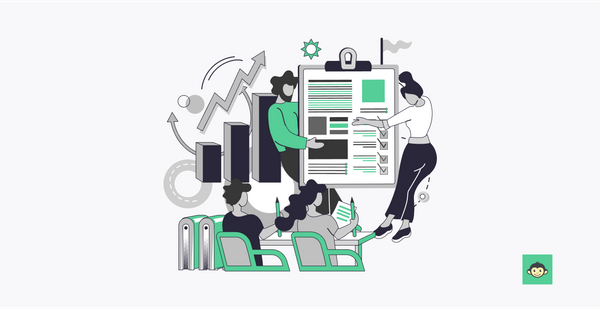
An Employee Experience Platform (EXP) like Culture Monkey can significantly streamline and enhance the development and implementation of your employee engagement action plan in several ways:
By leveraging data, personalization, communication tools, automation, and analytics, you can create a more agile, effective, and employee-centric engagement strategy that fosters a motivated and committed workforce.
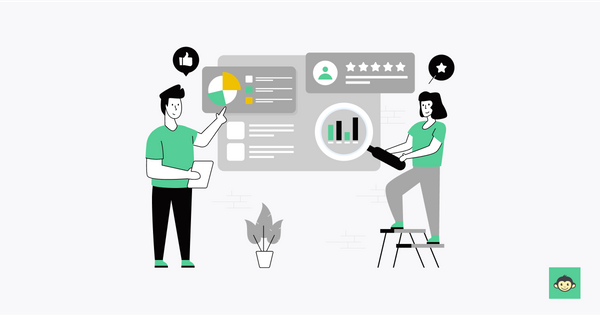
The link between employee engagement survey results and action plans is pivotal for cultivating a thriving workplace culture. Employee engagement surveys serve as powerful diagnostic tools, offering insights into the organization's strengths and areas that demand attention.
Once the survey results are obtained, the subsequent action plan becomes the vehicle through which positive change is implemented.
Survey results highlight specific aspects of the work environment that impact employee satisfaction, motivation, and overall engagement.
These insights, when translated into a well-crafted action plan, guide organizations in addressing deficiencies, reinforcing strengths, and aligning strategies with the aspirations and expectations of the workforce.
The symbiotic relationship between survey results and action plans is evident in the targeted initiatives that emerge.
Whether it's improving communication channels, enhancing professional development opportunities, or fostering a culture of recognition, the action plan directly responds to the nuanced feedback gathered through the survey process.
This link is not just a procedural formality but a strategic alignment of organizational objectives with the sentiments of its workforce.
A robust action plan, grounded in survey findings, demonstrates an organization's commitment to continuous improvement and employee well-being, ultimately fostering a workplace environment where employees are more engaged, motivated, and invested in the collective success of the organization.
An employee engagement action plan isn't just a document; it's the heartbeat of a thriving organization. It defines purpose, drives productivity, and fosters a culture of collaboration and commitment.
By embracing the power of a well-crafted action plan, coupled with innovative examples and best practices, businesses can unlock the full potential of their most valuable asset: their people.
Employee feedback can be integrated into the action plan by collecting input through surveys, focus groups, and one-on-one meetings. Analyzing feedback allows for the identification of areas needing improvement, which can then be addressed through specific action items in the plan, ensuring alignment with employee needs and fostering a culture of inclusivity and collaboration.
The employee engagement action plan should be reviewed and updated regularly, ideally on a quarterly or biannual basis. This allows organizations to assess progress, gather new feedback, and adapt strategies accordingly to ensure continued relevance and effectiveness. Regular reviews ensure that the action plan remains dynamic and responsive to changing employee needs and organizational priorities.
Improving communication as part of the employee engagement action plan involves implementing clear channels for information dissemination, fostering open dialogue between management and employees, and providing regular updates on organizational developments and initiatives. Incorporating feedback mechanisms and encouraging two-way communication ensures that employees feel heard, valued, and informed, leading to enhanced engagement and morale.
Training and development initiatives are integral to enhancing employee engagement as they provide opportunities for skill enhancement, career advancement, and personal growth. By investing in employee development, organizations demonstrate their commitment to employees' professional success and well-being, leading to increased job satisfaction, higher morale, and greater loyalty. Training programs also empower employees to contribute more effectively to organizational goals, driving overall productivity and performance.
Assessing current employee engagement levels involves using surveys, feedback tools, and one-on-one interviews to gather insights directly from employees. Regular pulse surveys and engagement questionnaires can identify areas of concern and satisfaction. Additionally, analyzing metrics such as turnover rates, absenteeism, and productivity can provide valuable data. Combining qualitative and quantitative approaches ensures a comprehensive understanding of employee engagement.
Technology supports an employee engagement action plan by providing platforms for communication, feedback, and recognition. Tools like intranet portals, collaboration software, and employee engagement apps streamline interactions and keep employees informed. Gamified feedback systems and virtual wellness programs enhance engagement, while data analytics platforms track progress and identify trends. Technology enables a more connected, responsive, and adaptable engagement strategy, catering to the diverse needs of the workforce.
Kailash is a Product Marketer with 5+ years of experience. He loves story-telling in the simplest way possible and he is an avid reader, movie buff, and likes to travel new places to meet new people.